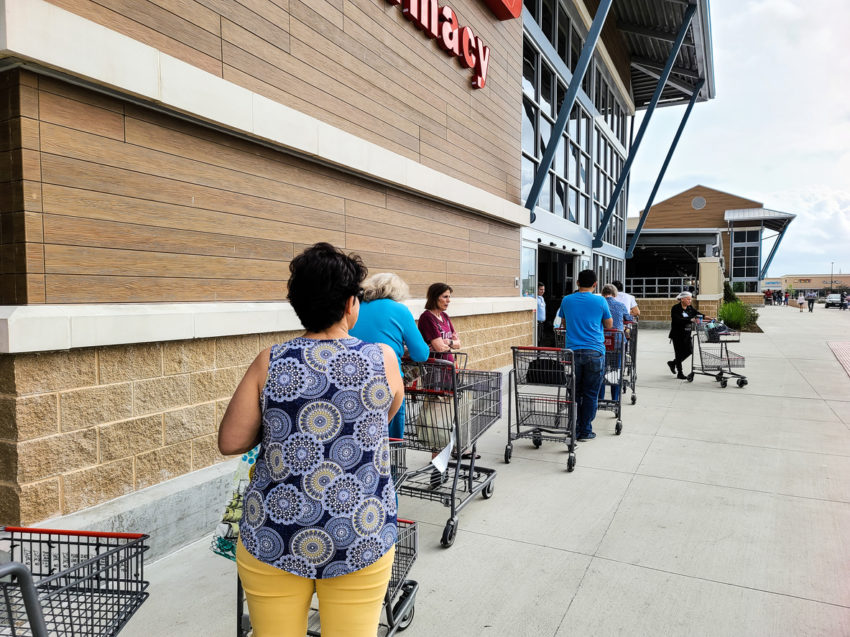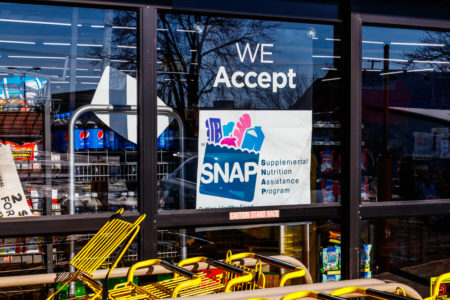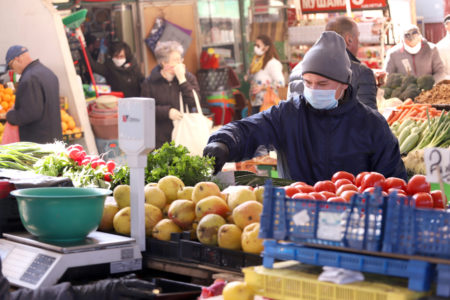
Share On Social!
Food stamps began in America during another national crisis, the Great Depression — now, during the coronavirus pandemic, government programs are advocating for expansion.
The Supplemental Nutrition Assistance Program (SNAP) received a big increase in federal support from the USDA on Wednesday. Moreover, a recent report from the Robert Wood Johnson’s Healthy Eating Research program shows that this kind of investment only helps families and the American economy.
“In a time of economic uncertainty, increasing SNAP benefits is a proven policy approach to stimulate the economy, reduce economic hardship, and improve health,” the report states. “Future federal recovery policy approaches should consider SNAP’s proven ability to lift people out of poverty, purchase healthy food, and create and preserve jobs, as well as the evidence supporting an increase in the monthly benefit allotment.”
But USDA, under the Trump, is trying to restrict access to SNAP.
Update 5/14/20: USDA has appealed a court order barring a change to SNAP that could remove nearly 700,000 recipients from its rolls, The Hill reports.
How SNAP Improves a Falling Economy
During times of financial hardship, families across the country are required to rely on government assistance to provide for their families when their jobs cannot.
While some might think these programs drain the economy, but that is not the case, according to the USDA Economic Research Service. Their data went to show that a $1 billion increase in SNAP benefits economic hardships resulted in:
- Increases GDP by $1.54 billion
- Supports 13,560 new jobs and
- Creates $32 million in farm income
Mainly, this money goes to stimulate the economy.
It also provides families with greater food security. Latino and black households are more likely to suffer food insecurity (16.2% and 21.2%, respectively) than the national average (11.1%).
Secretary of Agriculture Sonny Perdue announced in mid-April 2020 emergency benefit increases of $2 billion per month for SNAP households throughout the country.
While good news, these SNAP injections come on the heels of a long-term defunding initiative to by the current administration.
In fact, members of the Salud America! network spoke up for the importance of SNAP, and urged federal leaders not to reduce funding in: 
These rule changes had alarming consequences for families.
For example in October 2019’s proposed rule change, Kate Leone, of advocacy group Feeding America, painted a picture of how cuts only went to hurt families.
USDA on May 13, 2020, appealed the blockage of its proposed change to allow states to waive the SNAP requirement that non-disabled adults without dependents to prove that they have worked at least 80 hours a month for more than three months to receive aid. This could remove 688,000 recipients from its rolls, Time reports.
“If the three proposals become final and are implemented, millions of SNAP participants will have their benefits reduced or cut altogether — particularly seniors, people with disabilities and working families — and 500,000 children will lose access to school meals,” Kate Leone, of advocacy group Feeding America, told the New York Times.
This report only goes to show the importance of the government assistance program, according to the Healthy Eating Research program.
“These findings highlight the current inadequacy of SNAP benefits, which is likely amplified as a result of COVID-19, as well as the evidence that increasing SNAP benefits is a proven policy approach to stimulate the economy,” the report states. “Because of unrealistic assumptions used to calculate monthly benefits, current SNAP benefit levels are insufficient for participants to afford nutritious food throughout the month. This inadequacy is likely amplified as a result of COVID-19.”
How SNAP Helps Latinos
SNAP provides federally funded nutritional support to countless low-income families, as well as people of color and other disadvantaged groups.
“With unemployment currently at a record high as a result of COVID-19, participation in the SNAP is expected to increase significantly,” the Healthy Eating Research program report states. “Congress has already passed three COVID-19 aid bills, which include SNAP provisions such as funding for emergency benefits for SNAP households and program administrative flexibilities.”
SNAP program benefits supplied roughly 40 million Americans in 2018, at an expenditure of $57.1 billion.
The program lifts millions of people out of poverty and helps them stay out. SNAP helps recipients avoid poverty and hunger. It also boosts children’s health and allows children to perform better in school. 
Latinos make up about 20% of SNAP recipients, according to the Center on Budget and Policy Priorities. Moreover:
- 34% of SNAP households include seniors
- 23% of SNAP households include children
- 11% of SNAP households include a person with a disability
“These are unprecedented times for American families who are facing joblessness and hunger,” Perdue told Super Market News. “USDA is providing a 40% increase in SNAP benefits to ensure that low-income individuals have enough food to feed themselves and their families during this national emergency.”
Explore More:
Healthy FoodBy The Numbers
1
Supermarket
for every Latino neighborhood, compared to 3 for every non-Latino neighborhood



